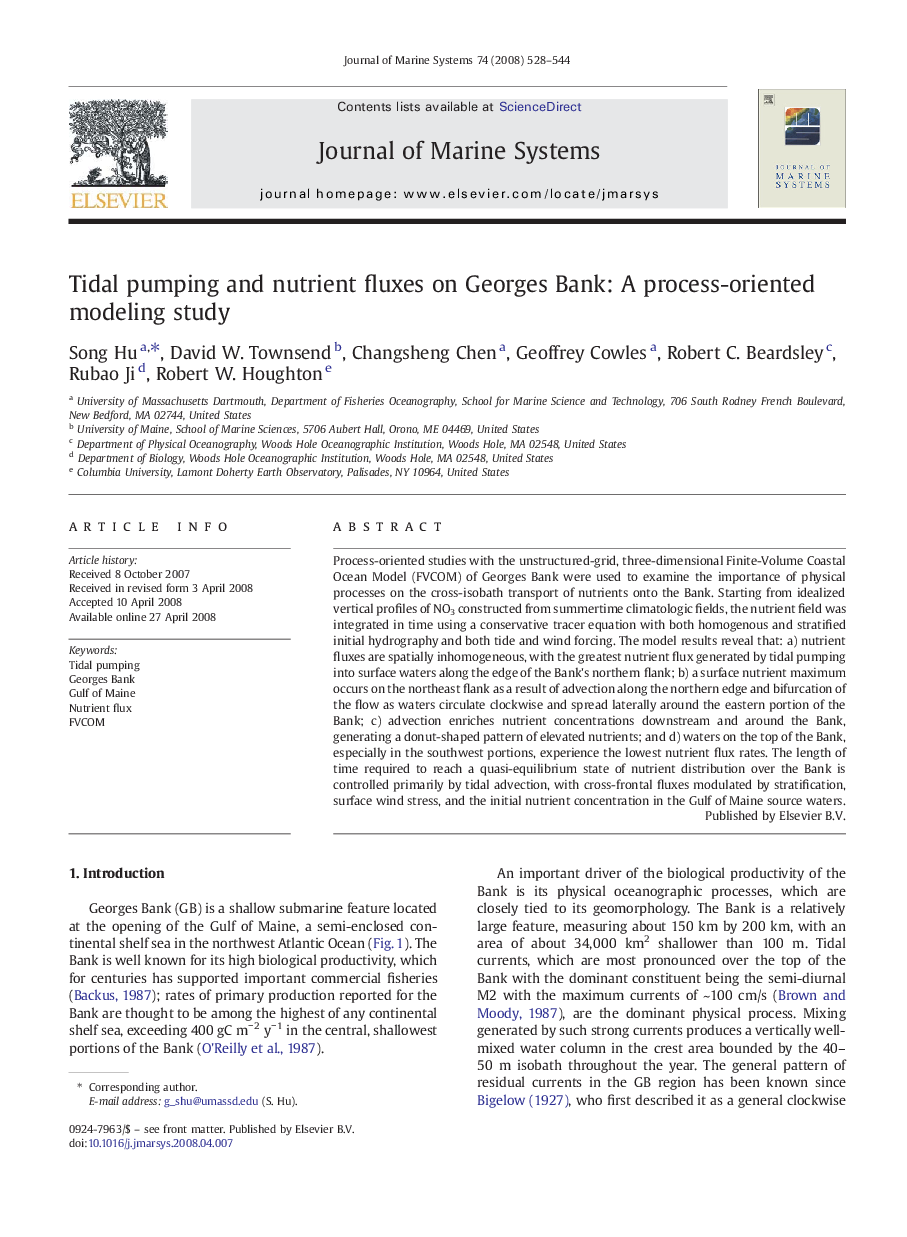| Article ID | Journal | Published Year | Pages | File Type |
|---|---|---|---|---|
| 4549018 | Journal of Marine Systems | 2008 | 17 Pages |
Process-oriented studies with the unstructured-grid, three-dimensional Finite-Volume Coastal Ocean Model (FVCOM) of Georges Bank were used to examine the importance of physical processes on the cross-isobath transport of nutrients onto the Bank. Starting from idealized vertical profiles of NO3 constructed from summertime climatologic fields, the nutrient field was integrated in time using a conservative tracer equation with both homogenous and stratified initial hydrography and both tide and wind forcing. The model results reveal that: a) nutrient fluxes are spatially inhomogeneous, with the greatest nutrient flux generated by tidal pumping into surface waters along the edge of the Bank's northern flank; b) a surface nutrient maximum occurs on the northeast flank as a result of advection along the northern edge and bifurcation of the flow as waters circulate clockwise and spread laterally around the eastern portion of the Bank; c) advection enriches nutrient concentrations downstream and around the Bank, generating a donut-shaped pattern of elevated nutrients; and d) waters on the top of the Bank, especially in the southwest portions, experience the lowest nutrient flux rates. The length of time required to reach a quasi-equilibrium state of nutrient distribution over the Bank is controlled primarily by tidal advection, with cross-frontal fluxes modulated by stratification, surface wind stress, and the initial nutrient concentration in the Gulf of Maine source waters.
